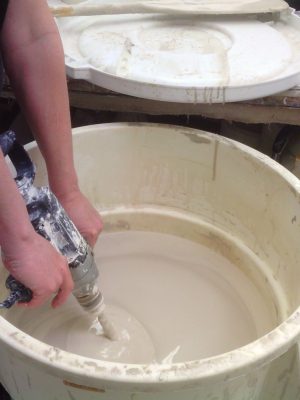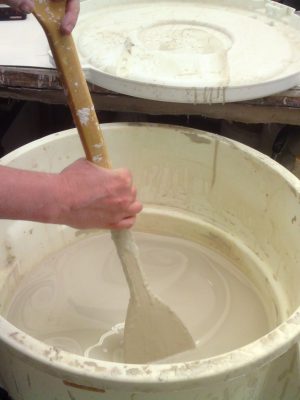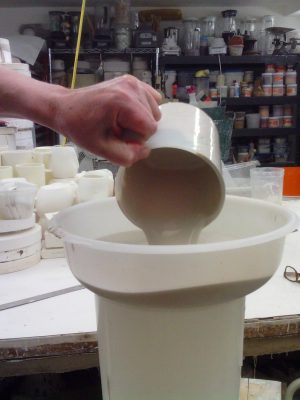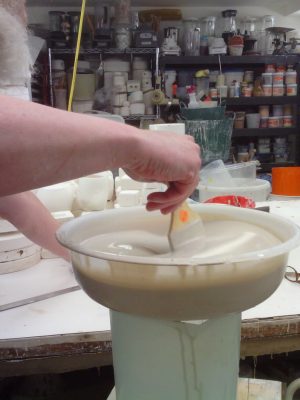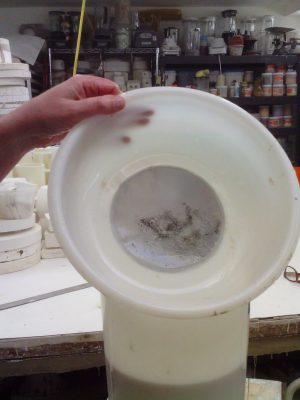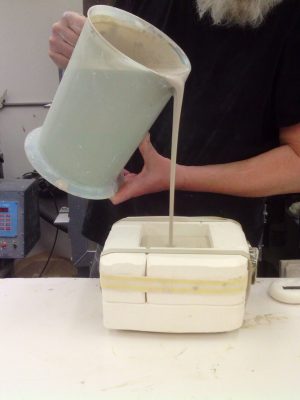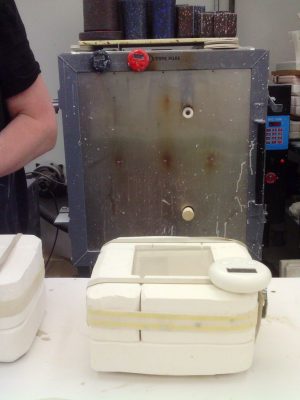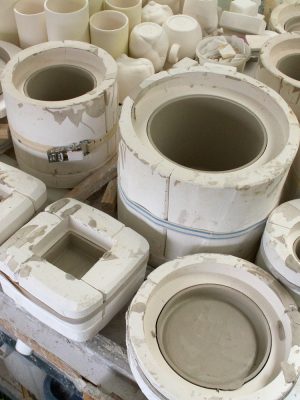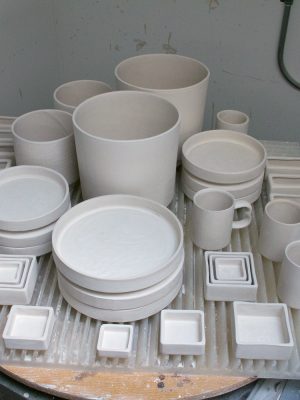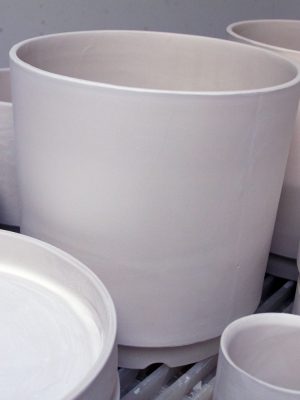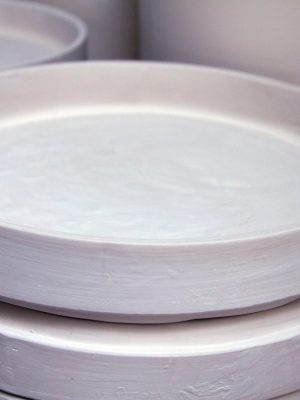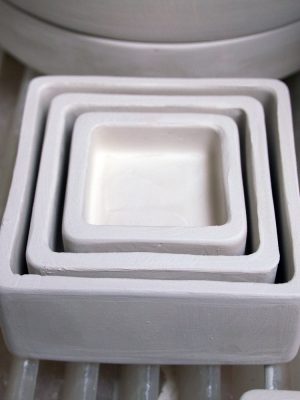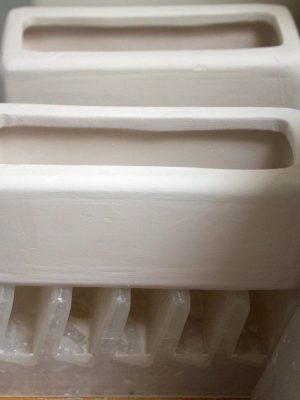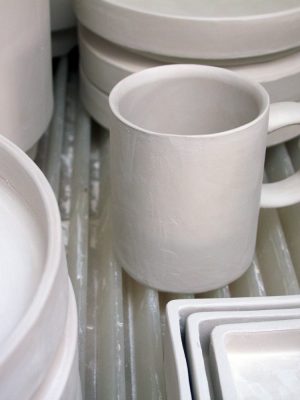I start any new batch of casting slip at the end of the day. First the water and the defloculent go into the barrel. Then the dry ingredients, lightest to heaviest. Then seal it with the lid and let it slake until morning. Gives the air time to clear.
First thing next morning, I break up the damp crust the ingredients have become into the water below. A child’s canoe paddle is an ideal tool for this job. Then I have at it with the large drill mixer.
I mix it up once or twice an hour throughout the morning. Gets a little smoother each time. By early afternoon, the slip makes a silky web between my fingers. Then it sits for twenty four hours to give the air bubbles time to escape. Finding lots of sand when I pass it through the sieve.
Slip casting is a very slow method of production. I managed one good copy from each mould at most per day. Any second copies I tried were riddled with pinholes.
The large planter had to sit in the mould overnight. Tried removing one at end of the first day. It lost its shape as soon as I picked it up.
Cast the first of the business card holders. Made the original square forms that inspired the modular set into nesting boxes retroactively making them part of it.
No time to make moulds this coming week. The plant pots and vases for the WAG event have to be ready next week. The only way to meet the deadline is to bisque, glaze and fire.

